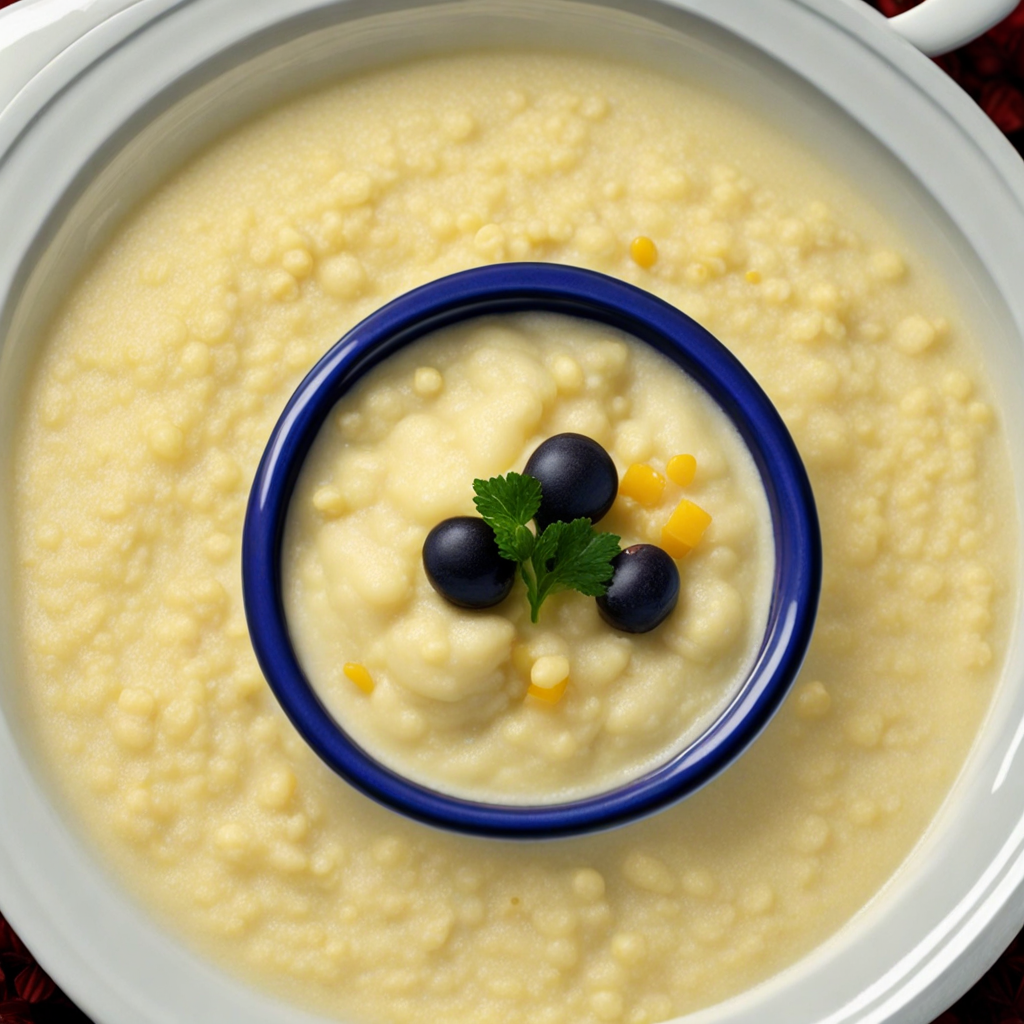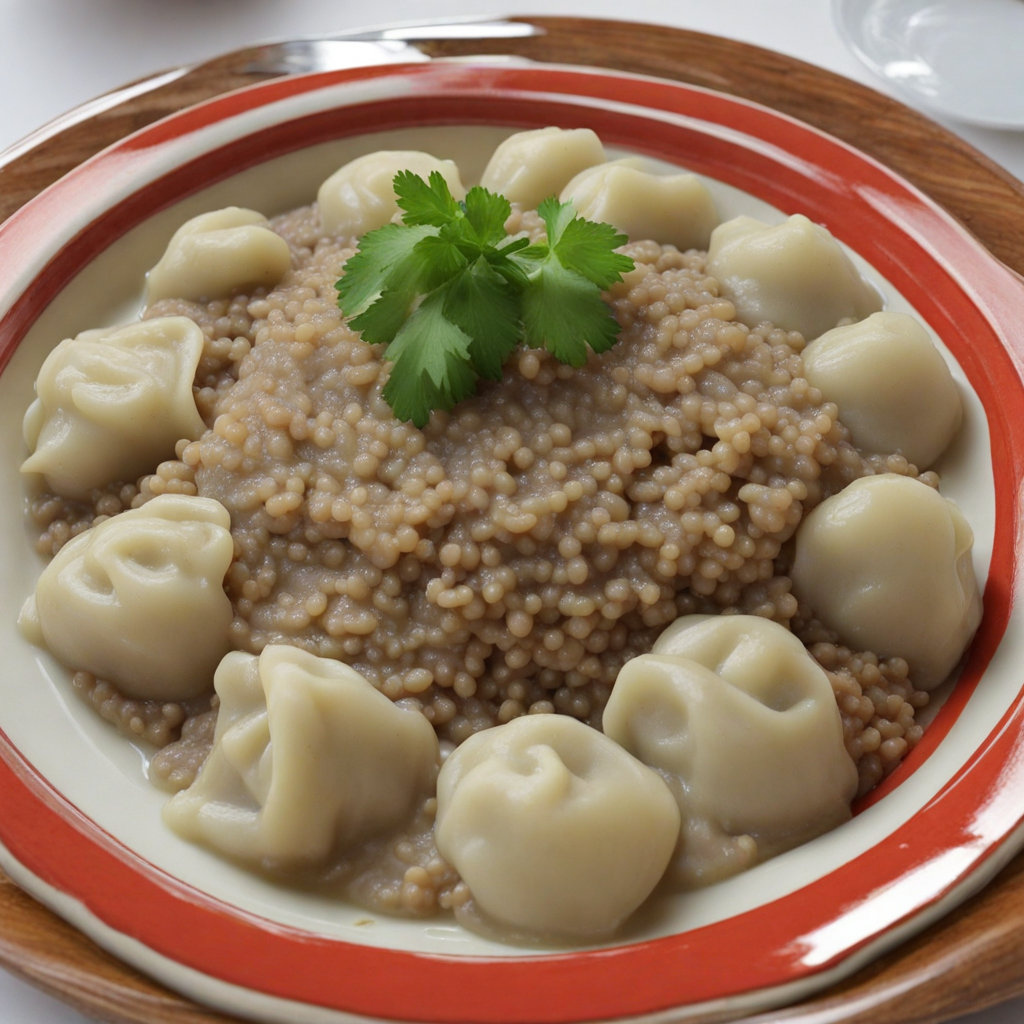Ribel
Ribel is a traditional dish from Liechtenstein, showcasing the rustic charm of Alpine cuisine. This hearty dish is made from coarsely ground cornmeal, which is mixed with water and salt to create a thick batter. The mixture is then slowly cooked on a flat surface, such as a griddle or a pan, until it develops a golden crust on the outside while remaining soft and creamy within. The cooking process infuses the cornmeal with a subtly sweet, nutty flavor, creating a comforting base that pairs wonderfully with a variety of toppings. What sets Ribel apart is its versatility. It is often served with a dollop of creamy butter, a sprinkle of fresh herbs, or a generous helping of cheese, enhancing its flavor profile. Some variations include serving it alongside savory accompaniments like sautéed mushrooms or caramelized onions, while others might opt for sweet toppings such as fruit preserves or honey, catering to different taste preferences. The dish can be enjoyed as a main course or a side, showcasing its adaptability within the gastronomic landscape of Liechtenstein. The experience of savoring Ribel is deeply rooted in the communal spirit of Alpine dining. Traditionally enjoyed in cozy mountain lodges or during family gatherings, this dish evokes a sense of warmth and togetherness. Each bite offers a glimpse into Liechtenstein's culinary heritage, reflecting both the simplicity and richness of its ingredients. For those seeking to explore new tastes, Ribel promises an authentic journey into the heart of Liechtenstein’s food culture, inviting you to indulge in its comforting flavors and satisfying textures.
How It Became This Dish
Ribel: The Heart of Liechtenstein's Culinary Identity Ribel, often referred to as Ribelmais or Ribelcorn, is a traditional dish that embodies the culinary heritage of Liechtenstein, a small, landlocked country nestled between Switzerland and Austria. This dish, primarily made from cornmeal, reflects the agricultural practices, regional climate, and cultural history of the area, making it more than just a meal—it is a symbol of community and tradition. #### Origins of Ribel The origins of Ribel can be traced back to the 16th century, a time when maize was introduced to Europe from the Americas. As it became a staple crop, especially in mountainous regions and areas with challenging soil conditions, it quickly adapted to the dietary needs of the local populace. The term "Ribel" itself is derived from the Alemannic dialect, which is spoken in parts of Liechtenstein, Switzerland, and southern Germany. It reflects the influence of local languages on food terminology and underscores the dish's regional significance. In Liechtenstein, corn was often grown on small farms, and Ribel became a practical solution for utilizing this crop. Farmers would grind the corn into a coarse meal, which could then be prepared in various ways. The dish is typically cooked as a polenta-like porridge, but it can also be shaped into dumplings or served as a side dish. Its versatility made it a beloved staple among the rural population, often served with rich gravies, stews, or simply with butter and cheese. #### Cultural Significance Ribel is more than just food; it carries deep cultural significance for the people of Liechtenstein. It is often associated with family gatherings, festivals, and communal meals. Traditionally, Ribel was prepared during harvest time, symbolizing the bounty of the land and the hard work of the farmers. The act of preparing Ribel often involved the entire family, fostering a sense of community and shared heritage. In Liechtenstein, culinary traditions are closely tied to national identity. Ribel embodies the spirit of the country’s agricultural past and reflects the resourcefulness of its people. In a region where the landscape is rugged and the climate can be unforgiving, Ribel served as a source of sustenance and comfort. This dish is typically enjoyed during winter months when hearty meals are essential for warmth and energy. Moreover, Ribel’s role in Liechtenstein's culinary landscape is also a testament to the country's broader history. While its neighbors have often overshadowed Liechtenstein, the presence of Ribel in local cuisine showcases the nation’s distinct identity, one that celebrates both its agricultural roots and its unique cultural traditions. #### Development Over Time As Liechtenstein modernized throughout the 20th century, so too did the preparation and consumption of Ribel. The post-World War II era saw a gradual shift in dietary habits, with an increasing influence from global cuisine and industrialized food production. However, despite these changes, Ribel has managed to retain its status as a cherished traditional dish. In contemporary Liechtenstein, Ribel is often served in restaurants that focus on regional cuisine, reflecting a growing interest in local food movements and sustainable agriculture. Chefs are increasingly exploring innovative ways to present Ribel, combining it with contemporary ingredients and cooking techniques. For instance, variations might include Ribel presented as a crispy cake or paired with gourmet toppings like wild mushrooms or seasonal vegetables, showcasing the dish's adaptability while respecting its roots. Additionally, Ribel has become a symbol of cultural pride, often featured in national celebrations and events. The annual Liechtenstein National Day, celebrated on August 15th, often includes traditional foods, with Ribel taking center stage at communal feasts. Such events reinforce the importance of preserving culinary traditions as a means of celebrating national identity and history. #### Ribel in the Global Context Ribel's significance extends beyond the borders of Liechtenstein as it finds its place in the broader context of European cuisine. Similar dishes can be found in various forms across the Alps, such as polenta in Italy and various cornmeal dishes in Switzerland and Austria. This regional similarity highlights the interconnectedness of culinary traditions, while also allowing Ribel to stand out as a unique representation of Liechtenstein's agricultural history. In recent years, the global food scene has shown an increasing interest in traditional and artisanal foods. Ribel, with its rustic charm and wholesome ingredients, fits perfectly within this trend. Food enthusiasts and culinary travelers seeking authentic experiences are drawn to the dish’s simplicity and the story behind it. As a result, Ribel has started to gain recognition beyond its homeland, inviting curious eaters to explore the flavors and culture of Liechtenstein. #### Conclusion Ribel is a culinary gem that encapsulates the essence of Liechtenstein’s history, culture, and identity. From its humble origins as a staple for rural families to its contemporary iterations in local restaurants, Ribel has evolved while remaining deeply rooted in tradition. It serves as a reminder of the importance of agricultural heritage, community, and the shared joy of gathering around a meal. As Liechtenstein continues to navigate the complexities of modernity, Ribel remains a steadfast symbol of its past and a testament to the enduring power of food as a means of connection and cultural expression. Whether enjoyed in a cozy home or at a festive gathering, Ribel continues to nourish not just the body, but the spirit of the Liechtenstein people, celebrating their rich history and the land that sustains them.
You may like
Discover local flavors from Liechtenstein







